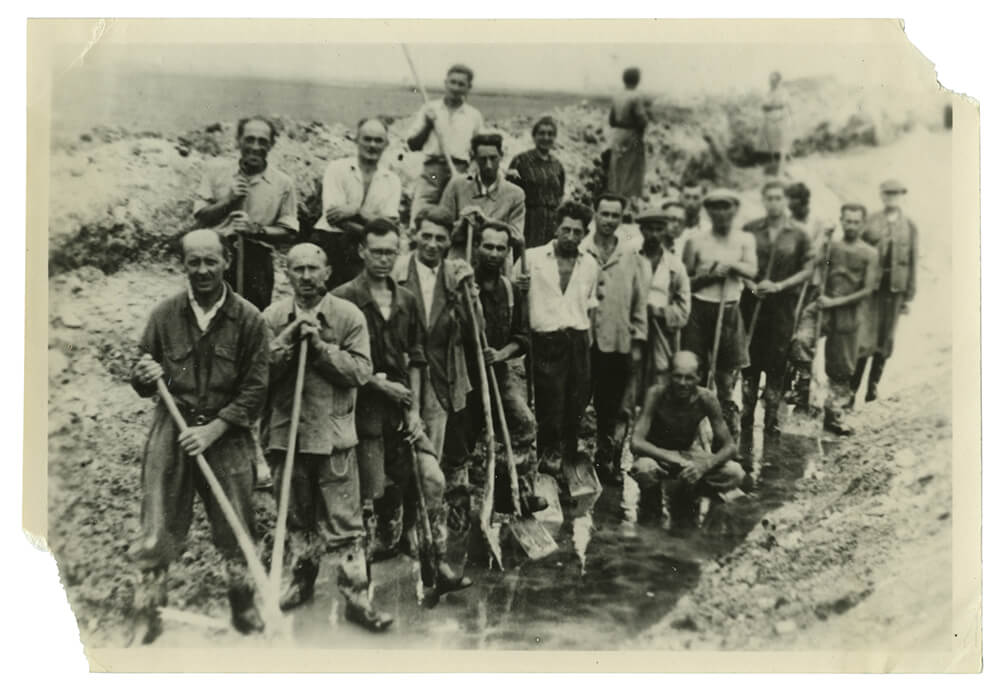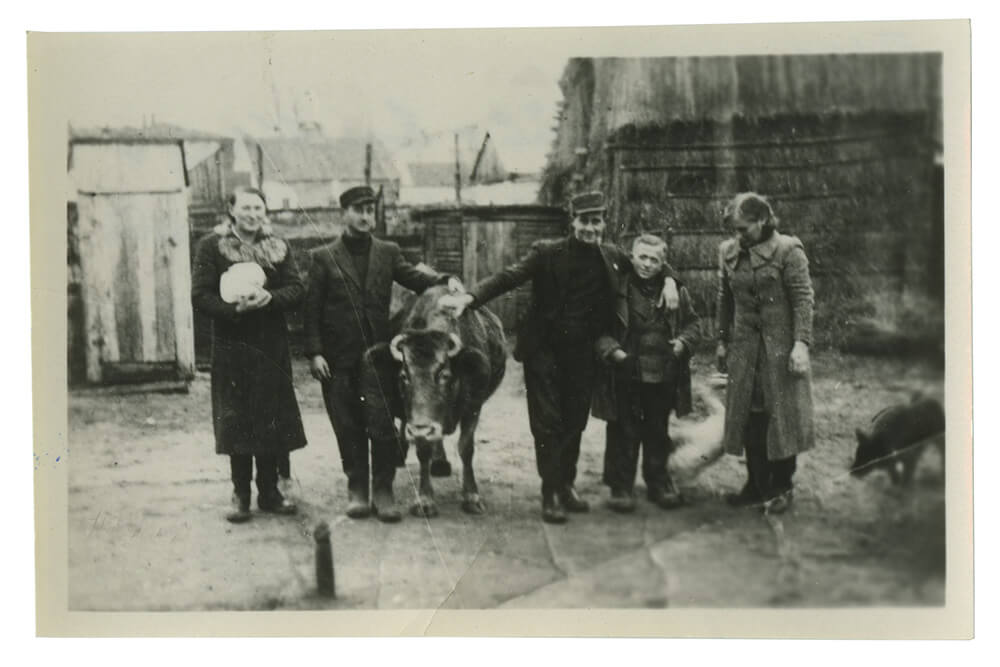Rejowiec

A group of prisoners forced to do land amelioration work in the forced labour camp at Sawin.
Jewish Museum in PragueThe ghetto in Rejowiec became one of the many transit stations for Jews from the surrounding area, from the Protectorate and from Slovakia. In April 1942, before the arrival of transports from abroad, 400 able-bodied locals were taken away to the forced labour camp in Krychów. The remaining 2,000 people were murdered in the Bełźec death camp. When the new arrivals came, there were only 200 local inhabitants, who had saved themselves by hiding in shelters. From the outset, the Jewish council in the ghetto did not operate as elsewhere. Chaos set in when the transports arrived from abroad; accommodation was not provided and the prisoners were at the mercy of the harsh conditions. There was a single well with drinking water in the entire town and there was no sewage system. Hundreds of people soon died as a result of the dire hygiene conditions and the lack of food. About 5,000 Jewish prisoners went through the ghetto in Rejowiec. Very few testimonies with specific information about the prisoners’ fate have been preserved. The ghetto was closed down on 9 August 1942 amidst much bloodshed. A selection was carried out in the town square. Only about a hundred strong young people were judged to be suitable for work; the sick and the elderly were shot on the spot. Many others were shot dead on their way to the railway station. The rest were deported to the Sobibor death camp by train.
Rejowiec was the destination for Transport Ap, which was dispatched from Terezín on 18 April 1942. According to eye-witness accounts, the luggage wagons were uncoupled while the train was in Lublin. Most of the deportees thus found themselves without their belongings for the journey. Some prisoners remained in Rejowiec, while a group of able-bodied people were sent off to do land amelioration work in the camp at Sawin. Men and women were forced to do the hardest labour there in difficult conditions, usually wearing inappropriate or insufficient clothing and up to their knees in water. Many of them died during the typhoid epidemic that broke out in the camp, others perished from exhaustion, and a number of them were shot for no reason. Only three prisoners from the Terezín ghetto survived.
